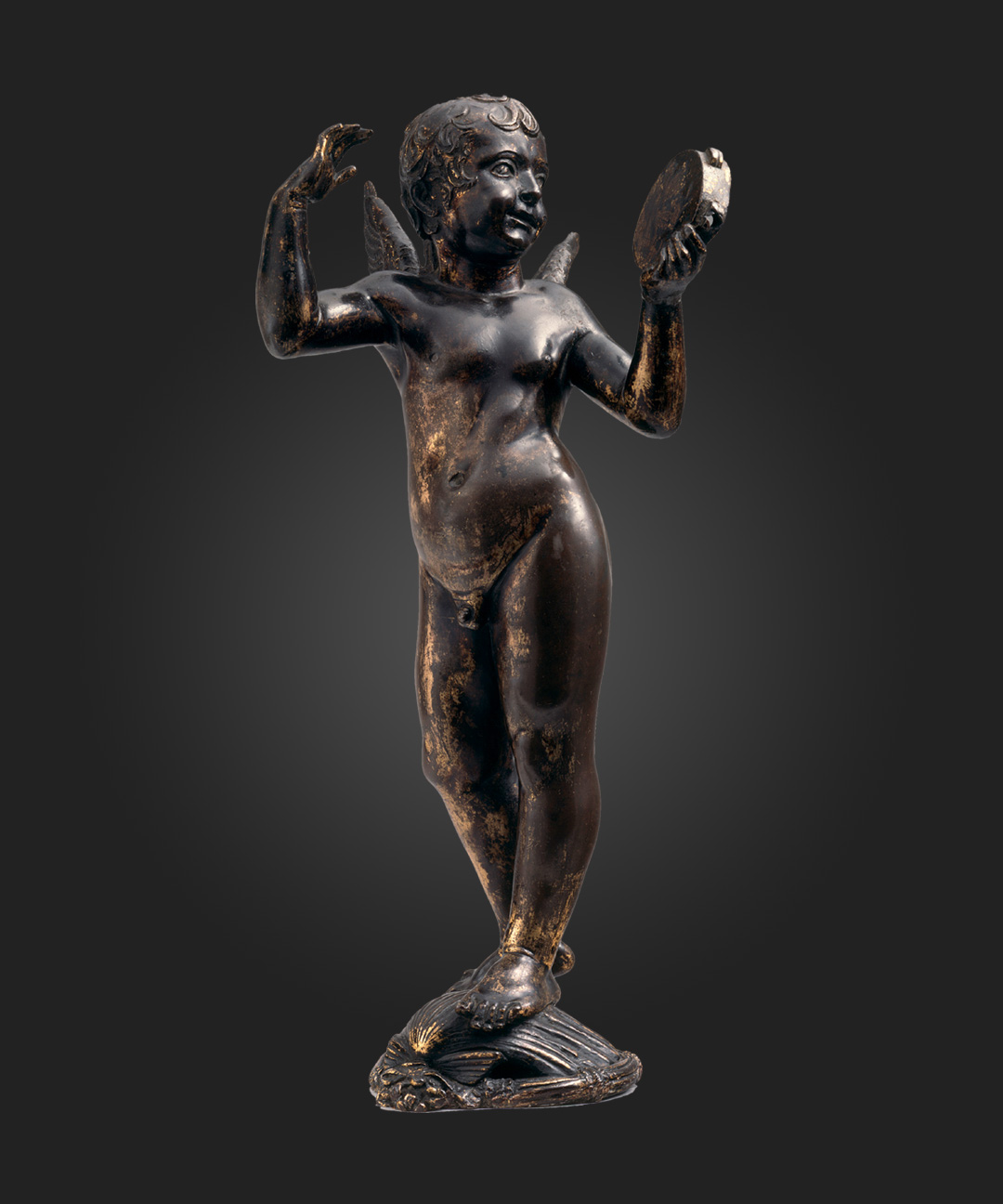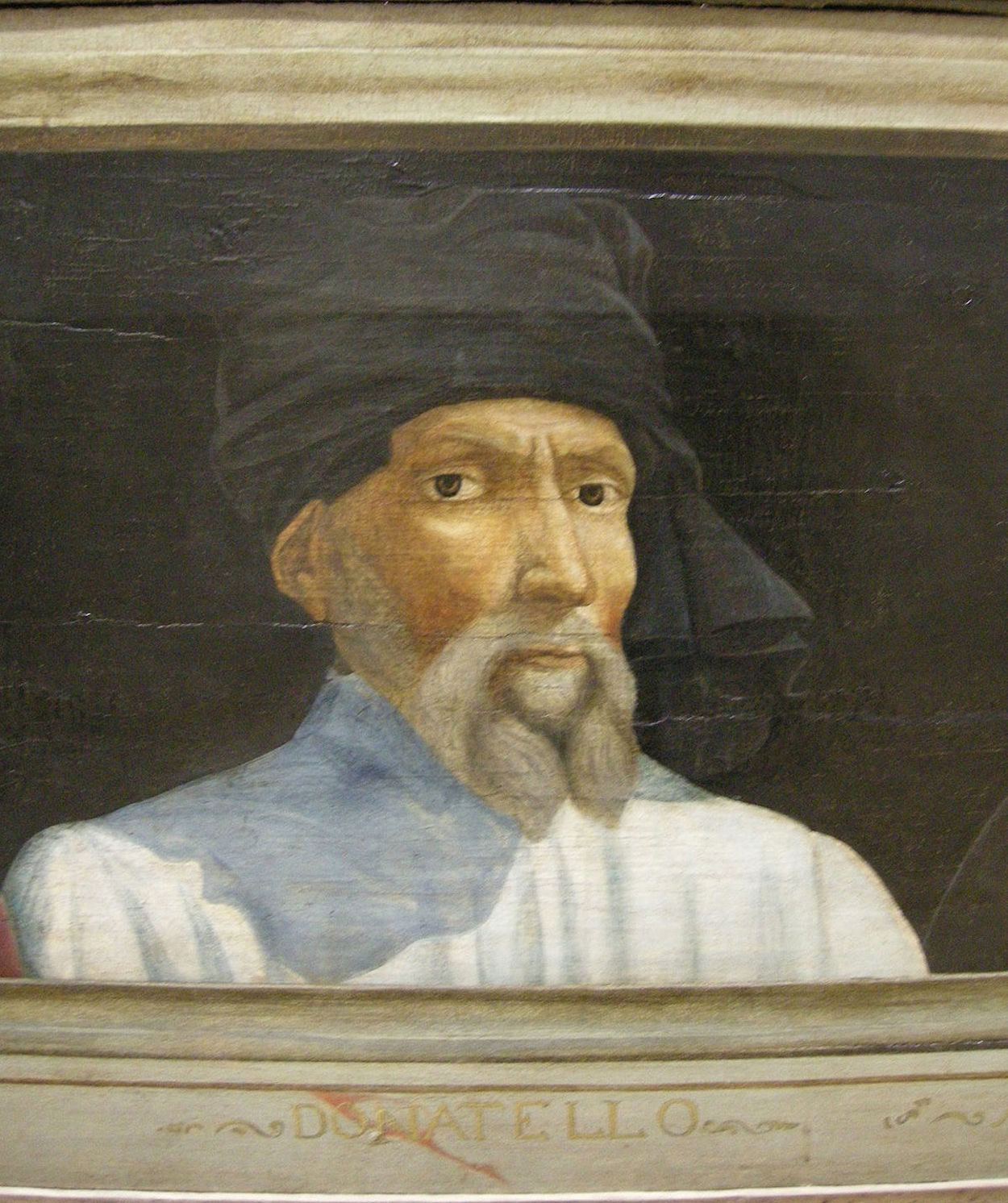We have an experiment for you. Today and tomorrow we will present two masterpieces that are very different from each other, created in diverse environments. They have been paired by the Bode-Museum, which would like to present them to you.
What determines whether an object is art or something else? The categorization is not just a matter of aesthetics and mastery of medium. More often, preconceptions about art and how well objects fit into them play a decisive role. The putto by Donatello (ca. 1386–1466) and the statuette of a goddess or princess from Benin, by an unknown artist, are both masterpieces but were treated differently.
The putto—a small winged figure—counts as one of the most important small sculptures of the early Italian Renaissance, a period of artistic innovation and experimentation. The work shows Donatello at the height of his artistic creation; the technical skill and creative vision behind it cannot be doubted. Precariously balancing his weight on a shell, the putto twists around an axis, turns to his left, and draws his hand back to strike his instrument. Donatello has cast in metal the most fleeting of moments. As a bronze casting the statuette was associated with political and cultural power.
As a masterpiece of Renaissance art, the putto was given pride of place next to the bust of Flora Bode ascribed to Leonardo da Vinci (1452–1519), and a number of later small, independent bronze statuettes in the Kaiser-Friedrich-Museum, nowadays called Bode-Museum, which sought to convey a sense of the culture in which the works were created.
Tomorrow we will tell you more about the Benin statuette.


 Donatello
Donatello